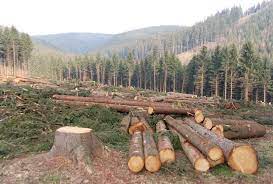Đừng bỏ lỡ những tính năng hấp dẫn của Baitap365.com
Unit 9: Protecting the environment
Tiếng Anh 10 Unit 9 Getting Started
Tiếng Anh 10 Unit 9 Language Tiếng Anh 10 Unit 9 Reading Tiếng Anh 10 Unit 9 Speaking Tiếng Anh 10 Unit 9 Listening Tiếng Anh 10 Unit 9 Writing Tiếng Anh 10 Unit 9 Communication and Culture / CLIL Tiếng Anh 10 Unit 9 Looking back Tiếng Anh 10 Unit 9 Project Grammar Unit 9 Tiếng Anh 10 Global Success Luyện tập từ vựng Unit 9 Tiếng Anh 10 Global Success Tiếng Anh 10 Global Success Unit 9 Từ vựngTiếng Anh 10 Unit 9 Getting Started
1. Listen and read. 2. Read the conversation again and answer the questions. 3. Match the words in A with the words in B to form phrases in 1. 4. Complete the following sentences based on the conversation.
Bài 1
A presentation on the environment
1. Listen and read.
(Nghe và đọc.)
Nam’s father: What are you doing, Nam?
Nam: I’m preparing a presentation for my geography class.
Nam’s father: What’s the topic?
Nam: It’s environmental protection. My teacher asked me to do some research, but I don’t know where to start.
Nam’s father: I think you should identify some environmental problems first. What have you found so far?
Nam: I’ve come up with a range of environmental issues such as global warming, deforestation, endangered animals and pollution, but I don’t know how to organise them.
Nam’s father: You should focus on each problem, explain the main causes of it, and the suggest the solutions.
Nam: Thanks, Dad. But presenting all the solutions will be hard.
Nam’s father: Have you asked your teacher for advice?
Nam: Yes, I have. She advised that I should start with small, practical actions to protect the environment before coming up with big ideas that need a lot of effort or money to succeed.
Nam’s father: Sounds good. You’d better follow her advice. When did she ask you to present it?
Nam: She said I should present it the following week.
Nam’s father: You still have a lot of time. Good luck!
Nam: Thanks, Dad.

Bài 2
2. Read the conversation again and answer the questions.
(Đọc lại đoạn hội thoại và trả lời các câu hỏi.)
1. What did Nam’s teacher ask him to do?
(Giáo viên của Nam đã yêu cầu bạn ấy làm gì?
2. What has Nam come up with so far?
(Nam đã nghĩ ra gì cho đến nay?)
3. When does Nam have to deliver the presentation?
(Khi nào Nam phải trình bày bài thuyết trình?)
Bài 3
3. Match the words in A with the words in B to form phrases in 1.
(Ghép các từ ở cột A với từ ở cột B để tạo thành các cụm từ trong bài 1.)
|
A |
B |
|
1. global |
a. animals |
|
2. practical |
b. issues |
|
3. environmental |
c. actions |
|
4. endangered |
d. warming |
Bài 4
4. Complete the following sentences based on the conversation.
(Hoàn thành các câu sau dựa vào cuộc hội thoại.)
1. My teacher _______ me to do some research on environmental protection.
2. She _______ that I should start with small, practical actions to protect the environment.
3. She _______ I should deliver my presentation the following week.
Từ vựng
1.
environmental protection /ɪnˌvaɪərənˈmɛntl prəˈtɛkʃən/ 

(n.phr): bảo vệ môi trường
Environmental protection is the practice of protecting the natural environment by individuals, organizations and governments.
(Bảo vệ môi trường là hoạt động bảo vệ môi trường tự nhiên của các cá nhân, tổ chức và chính phủ.)

2.
endangered animals /ɪnˈdeɪnʤəd ˈænɪməlz/ 

(n.phr): động vật có nguy cơ tuyệt chủng
Are you reading the book about endangered animals in the world?
(Bạn đang đọc cuốn sách về các loài động vật có nguy cơ tuyệt chủng trên thế giới?)

3.
do some research /duː sʌm rɪˈsɜːʧ/ 

(v.phr): thực hiện một số nghiên cứu
My teacher asked me to do some research, but I don't know where to start.
(Giáo viên yêu cầu tôi thực hiện một số nghiên cứu, nhưng tôi không biết bắt đầu từ đâu.)
4.
ask someone for advice /ɑːsk ˈsʌmwʌn fɔːr ədˈvaɪs/ 

(v.phr): hỏi xin lời khuyên của ai đó
Why don't you ask your sister for some advice?
(Tại sao bạn không hỏi chị gái của bạn một số lời khuyên?)
5.
practical action /ˈpræktɪkəl ˈækʃ(ə)n/ 

(n.phr): những hành động thiết thực
She advised that I should start with small, practical actions to protect the environment before coming up with big ideas that need a lot of effort or money to succeed.
(Cô ấy khuyên tôi nên bắt đầu từ những hành động nhỏ, thiết thực để bảo vệ môi trường trước khi nảy ra những ý tưởng lớn cần nhiều công sức hoặc tiền bạc để thành công.)
6.
(phr.v): nghĩ ra
What has Nam come up with so far?
(Nam đã nghĩ ra gì cho đến nay?)

7.
(v): xác định
I think you should identify some environmental problems first.
(Tôi nghĩ bạn nên xác định một số vấn đề môi trường trước.)

8.
(v): thực hiện
When does Nam have to deliver the presentation?
(Khi nào Nam phải thuyết trình?)
9.
(v): tổ chức
Not yet, but I think we'll organise more activities to raise local people's awareness of environmental issues.
(Chưa, nhưng tôi nghĩ chúng tôi sẽ tổ chức nhiều hoạt động hơn nữa để nâng cao nhận thức của người dân địa phương về các vấn đề môi trường.)
10.
deforestation /ˌdiːˌfɒrɪˈsteɪʃn/ 

(n): nạn phá rừng
I've come up with a range of environmental issues such as global warming, deforestation, endangered animals and pollution, but I don't know how to organise them.
(Tôi đã đưa ra một loạt các vấn đề về môi trường như sự nóng lên toàn cầu, nạn phá rừng, động vật có nguy cơ tuyệt chủng và ô nhiễm, nhưng tôi không biết cách sắp xếp chúng như thế nào.)

11.
Mẹo tìm đáp án nhanh
Search Google: "từ khóa + baitap365" Ví dụ: "Bài 5 trang 13 SGK Vật lí 12 baitap365